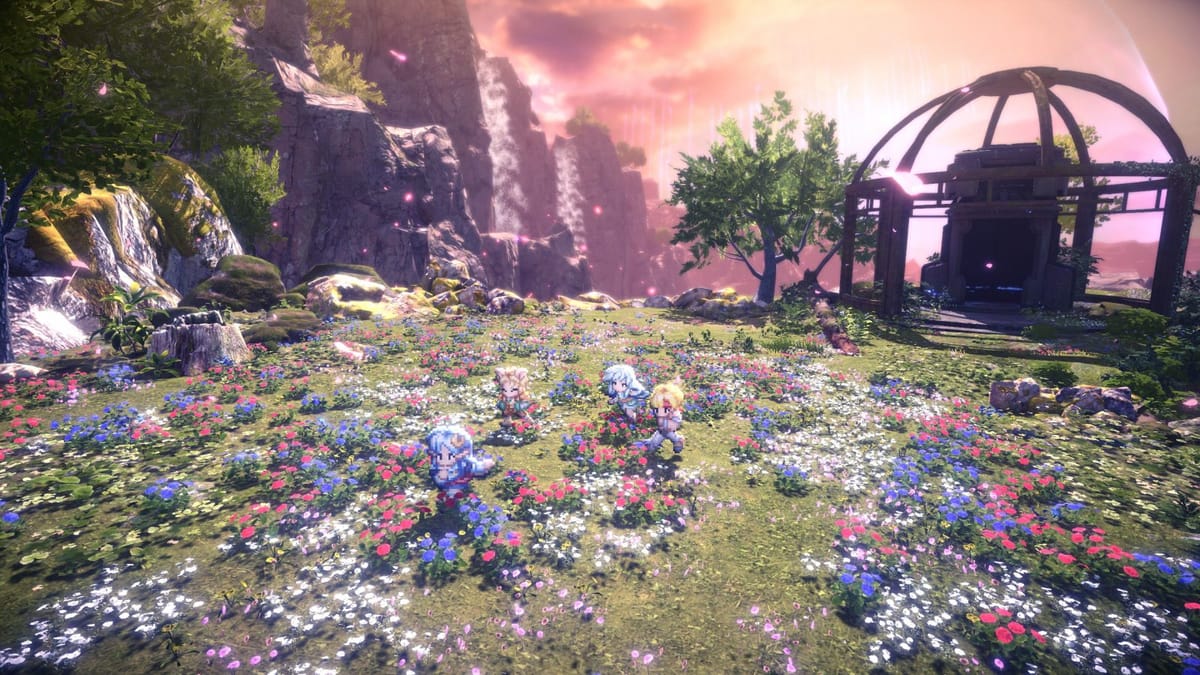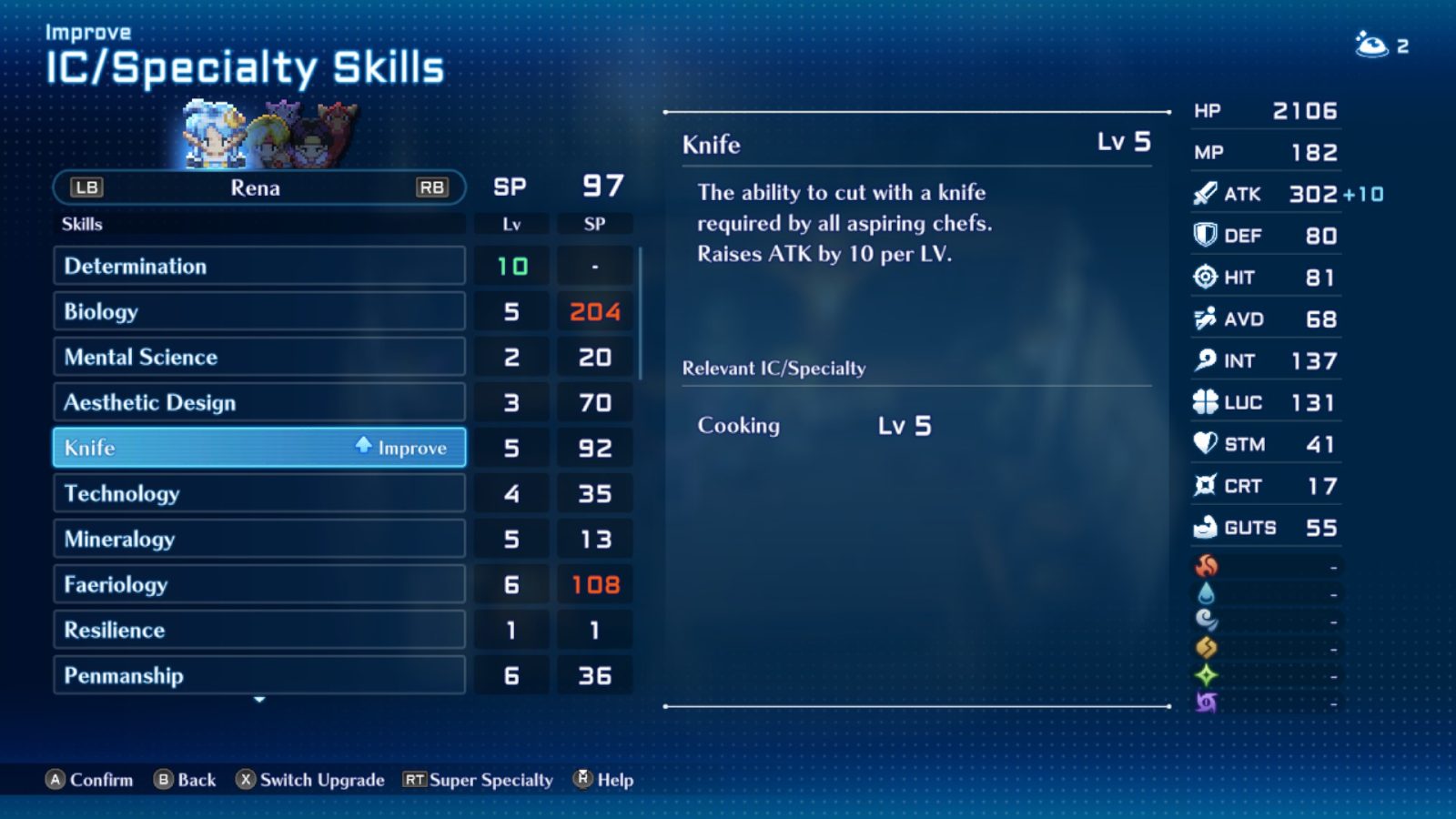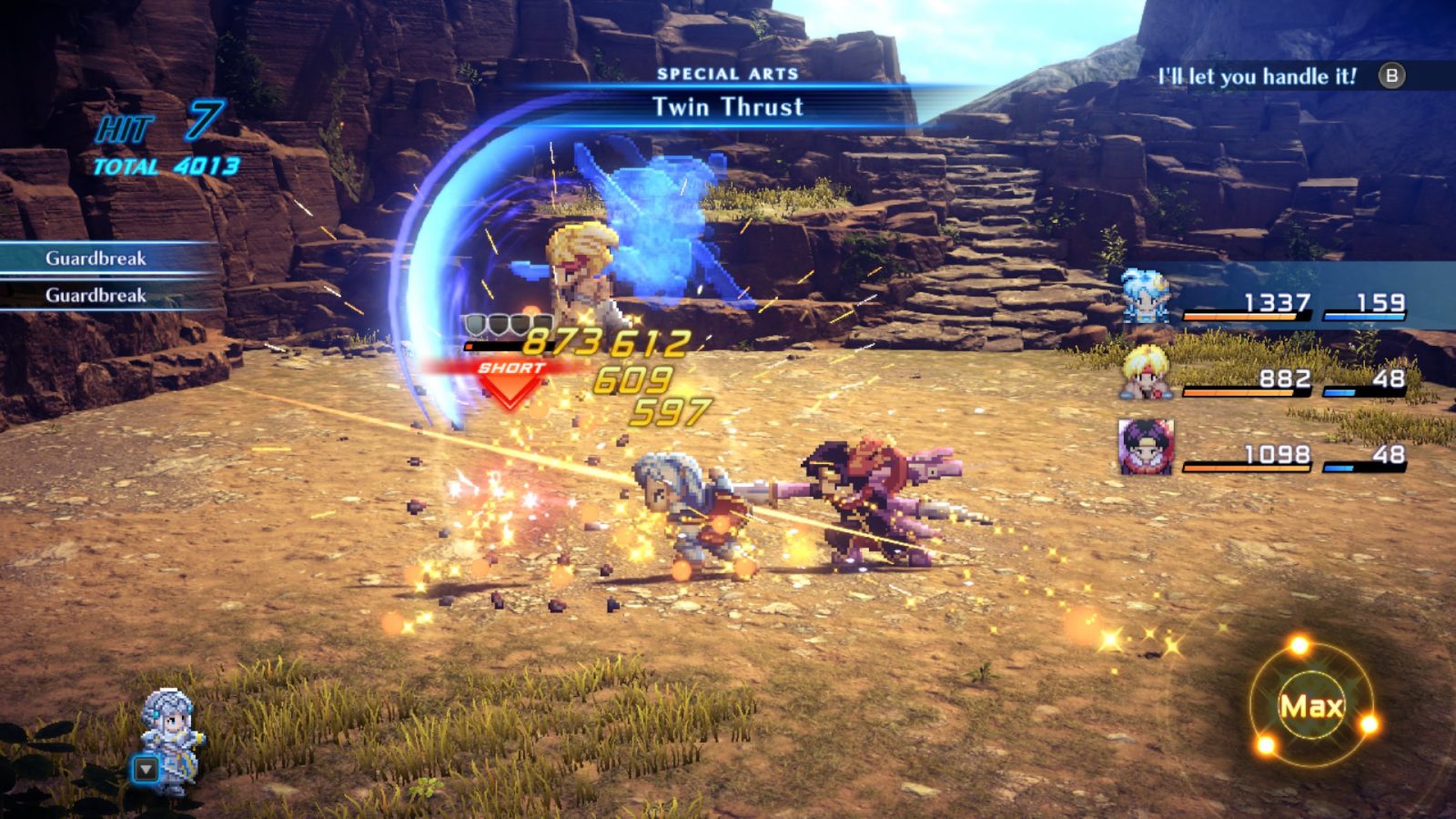
I started Star Ocean The Second Story R with high hopes. I’ve thoroughly enjoyed the two others I’ve played so far, First Departure R and The Divine Force, and I’ve heard great things about the series’ second entry. For the first several hours, it was exactly what I expected: a fun action RPG with tons of weird background mechanics and a minimal yet meandering story. However, things changed the moment I finally got to the plot, and I just wasn’t having fun anymore.
For those not in the know, R is actually the second remake/remaster of The Second Story. Originally released in 1998 for the PlayStation, then for the PSP as The Second Evolution in 2008/2009. The Second Evolution introduced a new English dub, which is the only one present of that language in R while both Japanese dubs are included. R is actually a from the ground up remake otherwise, with fully 3D environments while still retaining the charming 2D sprites. It’s not what SquareEnix calls HD-2D, but it looks fantastic in its own way.
The Second Story begins with you choosing a protagonist to follow, Claude or Rena, with each showing different scenes, perspectives, and having unique recruitable party members. A big draw of the original Star Ocean was the story changing slightly depending on who you chose to recruit, and while that’s not the case here as far as I can tell companions do still come with their own side quests or Private Action scenes (short cutscenes between characters that will increase their affinity, ultimately changing the ending). For example, with Rena as my protagonist my party consisted of Rena, Claude, Ashton, Precis, Welch, Dias, Chisato, and Noel. Early on, I could have had Celine, a caster, join up but chose not to keep her as Rena already had my offensive caster slot.
Battles are action focused, with you taking up to four characters into each encounter. You have free movement around the battlefield, can switch which party member you control at any time, and can bring up a menu to use items, cast spells, change strategies, or run away. All of your characters have a physical attack of varying usefulness, but can also assign two special skills, later four using a combo system, to use with the press of a button. For example, when playing as Rena I can assign an offensive spell to the right trigger, and a group heal to the left. I can still access all of my spells in the menu, but since I used these two so often I wanted instant access at all times.

Meanwhile, physical characters will only have access to whatever attacks you assign to their buttons, even if you’re not playing as them. These moves have three sub-types: break focused, HP-focused, and Balanced. All enemies have a shield of sorts that you can break by attacking them. Once broken, they are stunned and will take more damage from all attacks, so you’ll want to have a bit of variety in your move pool to break a foe quickly then dish out the real damage while they’re down. Your four assault characters can also help greatly with this. You can assign four characters to the D-Pad who, when pressing their assigned button once they come off of cooldown, will jump in and perform a special attack. These can be party members in reserve, so you can choose their move like a big Area of Effect attack or even a heal, or special cameo characters like Latecia from The Divine Force, Roddick from the first game, or Fayt from ‘Til the End of Time. I mostly went with the cameo characters because they’re just cool to see here, and perform powerful attacks to boot. Overall, all of these mechanics come together to create a very fun combat loop.
For quite a lot of the game, Rena was one of my best physical attackers despite not having any combos to speak of. One of the best parts of Star Ocean is figuring out how to completely break the game using accessories, Item Creation, and specialties. I was able to craft two accessories that I used the entire game: one that boosted Rena’s attack by a bit as well as doubling her maximum MP, and another that made her single hit punch hit twice with each press of the button. In the early game, I could stun lock bosses with this tactic which was super satisfying. Combine this with the Training specialty to reduce stats while gaining bonus experience and I quickly became overleveled. I appreciate a challenge as much as the next person, but the fun here comes from setting up your party to absolutely devastate any foe.

Unfortunately, that fun completely dissipates as soon as you enter one of the game’s final areas, Energy Nede. Normal encounters are still usually a breeze (provided the AI doesn’t zone out), but bosses feel like a coin flip. I’ve tried several strategies and party configurations, but most of the time your party members will just decide to die or the boss will give up if you’re lucky. For example, at the end of one dungeon I had to fight a robot who, at a certain point, creates a constant AoE attack around him that will instantly kill anyone inside. Since my melee characters and even my healer decided to stand in that AoE, I was stuck spamming a single spell for about 5 real life minutes just outside of the boss’ ranged attack range. Needless to say, that is not fun or even an interesting challenge. Every single boss in Energy Nede is like this or even worse without a strategy to cheese them. I was having a lot of fun until this point despite the lack of any real plot hooks, but the dip in quality was just too much that I didn’t want to finish the game. There was even a teleporter maze dungeon, the worst RPG trope, which is where I really lost the will to go on.
While I adore the effort put into the visuals and ease of play in Second Story R, this drop in quality as well as the lack of a new translation or dub leave the game feeling a half baked. You can really tell a lot of the writing here is a direct translation from Japanese as sentences are overly wordy and characters will speak to each other in unnatural ways. Eventually most of the cutscenes devolve into exposition while one of your party members will repeat a single word or phrase occasionally but with a question mark after it to keep the “conversation” going. As for the voice acting, you can really tell the actors, good as they are, simply don’t have context for most scenes. You might be watching a scene where Claude is having a tough time due to a recent tragedy, and in the middle he’ll just cheerfully say “I’m fine!” when the line is clearly meant to sound more resigned or dismissive. I also noticed in one very important scene the audio used didn’t match the dialogue boxes at all, with future voice lines used earlier than they are supposed to be. The game feels so polished in some areas, while not at all in others.
Star Ocean The Second Story R
Good
Star Ocean The Second Story R is a wildly inconsistent package, with the ending portions falling off greatly in quality, but still a mostly fun game. Battle and its surrounding systems can have a lot of variation depending on your party and how you choose to play. However, it lacks polish in many areas making it very difficult to want to finish.
Pros
- Tons of customization
- Very replayable
- Amazing visuals
Cons
- Energy Nede really falls off
- Actors clearly lack context for most dialogue
- Wonky translation
